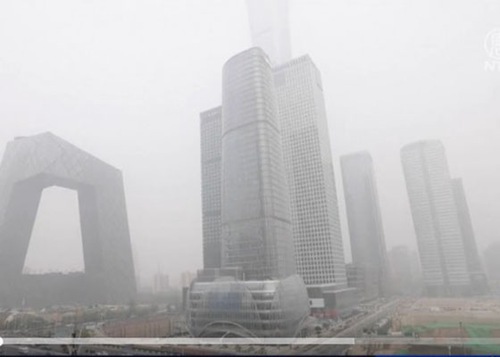Heavy Smog Triggered Dozens of Chinese Cities to Activate Pollution Warning
(Minghui.org) Beijing issued a yellow alert for heavy air pollution in its Fangshan District and Tongzhou District on November 6. On the same day, a red alert was issued in Dandong City, Liaoning Province.
Many other cities also issued a similar yellow alert, including in Jiangxi Province, multiple cities in Hubei Province (including Wuhan, Huanggang, Tianmen), Sanmen City in Zhejiang Province, Tongren City in Guizhou Province, and Canghou City in Hebei Province.
In China, there are three levels of air pollution alerts, including yellow, orange, and red (from less severe to most severe).
 Heavy smog in Beijing on the morning of November 6, 2021
Heavy smog in Beijing on the morning of November 6, 2021
According to news reports, 85 Chinese cities had small airborne particles known as PM2.5 as of 7 a.m. on November 5. They included Beijing, Tianjin, Hebei Province, Feiwei Plain (from Shanxi Province to Shaanxi Province), Yangtze River Delta (Shanghai, Jiangsu Province, Zhejiang Province), Middle Reaches of Yangtze River (from Sichuan Province to Hubei Province), and northeast China. Among them, 6 cities had severe pollution as measured by the level of PM2.5.
This wave of pollution started with an orange alert issued on November 2 in Henan Province (Kaifeng, Jiaozuo, Nanyang and other cities). It then spread to other places in central and eastern China.
Also as of 7 a.m. on November 5, there were 29 cities in eastern China issuing an orange alert for heavy air pollution. In addition, 9 cities issued a yellow alert for heavy air pollution.
In pictures taken by Beijing residents on 8:30 a.m. of November 6, heavy smog blanketed the city. Residents reported the smog was pungent and caused shortness of breath, similar to the smog that Beijing had in the past.